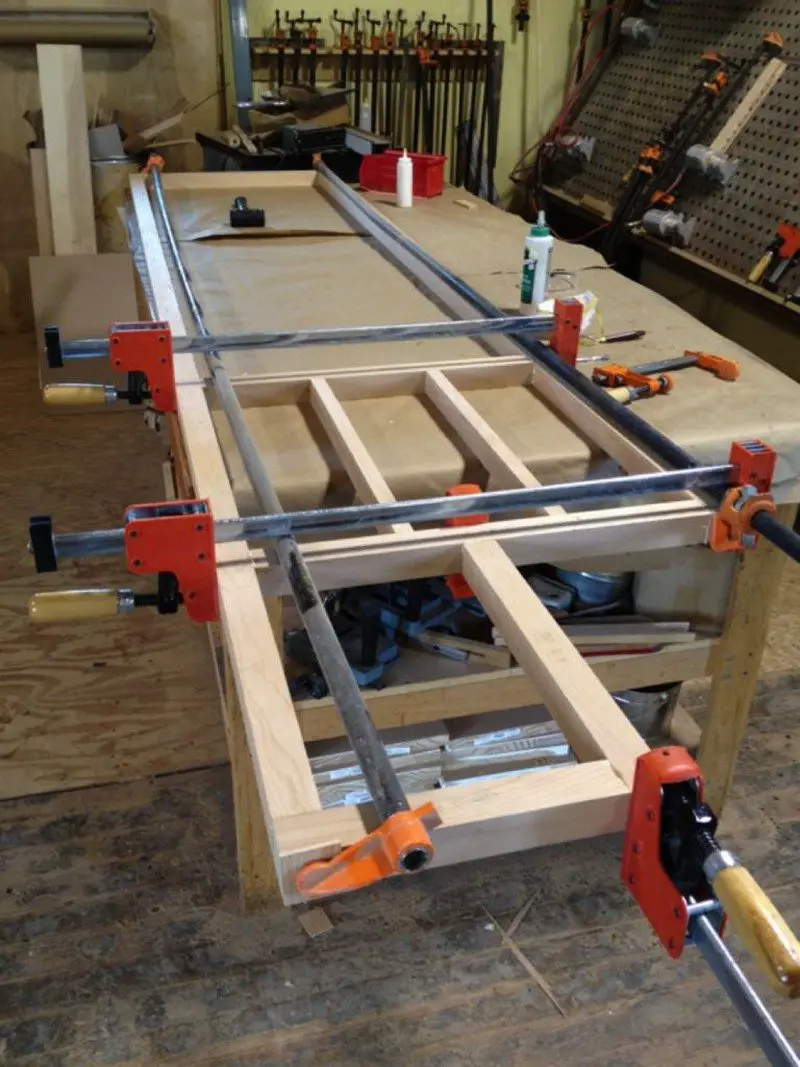With the frame still dry fit together, I labeled all of the parts. I also marked where every panel went. Take the extra time to double check that every part is labeled and the position of each panel is well marked. I have never not missed one, so triple check.
Back at the table saw, I set the dado blade to the thickness of the sanded panels plus a ‘hair’. Just loose enough to get piece bit of paper into the slot with the panel.
Now, I cut all the dados in the members as marked. There are some that required stopped dados. When you do this, PLEASE TAKE YOUR TIME! Stopped dados need extra special care on the table saw. I did mine on a Saw Stop and was glad to know I had that extra security.
I made some ½ loose tenon stock and sized them to fit the exact width of the mortises. Then I set a stop on a miter gage and cut a enough for all the front and back mortises. I cut them 1/8” shorter than the combined depth.
I then glued the front frames together. I choose to do this in stages when possible. It’s nice to be able to just have a few elements to have to control and square up. As each element is glued together I take careful care to check for squareness. Tight and straight work is imperative at this stage.

I measured off the front frames for the sizes of the back panels. Adding for the depth of the dados, I cut the panels starting with the largest ones first and took care to choose pleasing grain placement. Then, I finish sanded all panels to 220 grit and eased all the edges. This is important to avoid chipping the veneer during construction.
Next, I glued up back panels. Now it’s coming together!

For the last time, I dry fit the cases together and measured for the missing panels. I sized and sanded all panels taking careful care to label the riser and tread panels to keep them in order.
I sanded the front and back frames, preparing for the big glue ups. I took an extra minute and ran some 180 grit along each dado. This helps the parts come together when the heat is on and the glue is setting.

Now I gathered clamps, a couple of glue bottles, some rags and a rosary. I cleared the workspace and carefully laid out all the parts needed and devised a plan for applying glue, inserting tenons and panels as smoothly as possible. At the start of your glue up, take a deep breath and get going. If all goes well – congratulations, if not pull it apart. It’s not worth getting it wrong. Take it apart, wipe off the glue and try again the next day.
Now invite friends and family to tell you how clever you are for making such a cool thing.







